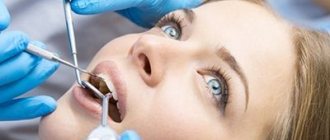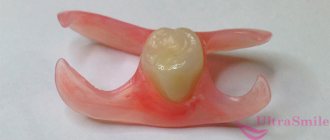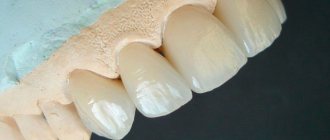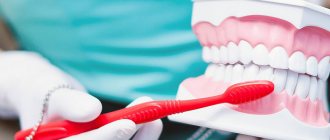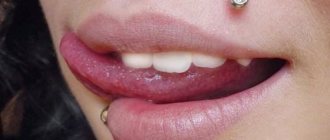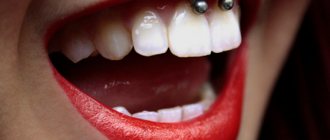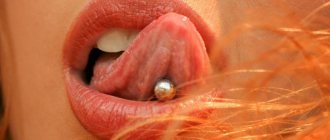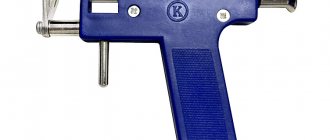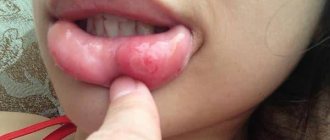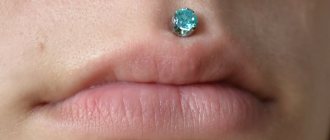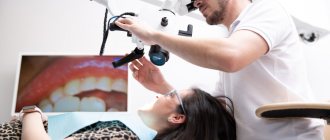Piercing is a procedure in which a puncture is created in the body for wearing jewelry. An open wound takes a long time to heal and requires especially careful care. However, if a person does not properly care for an unhealed puncture, and the technician works poorly and does not care about the sterility of the instruments, this leads to serious complications. To avoid becoming a victim of piercing, you need to familiarize yourself in advance with the likely negative consequences and the reasons for their development.
How long does it take for a piercing to heal and how to understand that complications have arisen
A fresh puncture goes through three stages: inflammatory, active healing and restorative. The duration of each stage depends on the location where the hole is made. For example, a nose piercing takes 1-2.5 months to heal, an eyebrow piercing takes 2-3 months, and a tongue piercing takes 3-4 months. Read more about healing times in our separate article.
The first signs will help you understand that complications have begun to develop in the puncture area:
- too much redness in the puncture area;
- itching;
- pain;
- feeling of heat in the wound area and increased body temperature;
- purulent discharge.
Diversity in the world of piercing
It should be noted that more and more new types of piercings are appearing. If previously they mainly pierced the ears, eyebrows, tongue, navel, lips and nose, now more and more people have begun to get involved in piercing intimate parts of the body. And some daredevils even dare to do brain piercing. In this case, holes are drilled in the human skull into which rings are inserted. If the punctures are made in the right places, then these rings will constantly stimulate the area of the brain responsible for the production of hormones of happiness and pleasure. However, this procedure is extremely dangerous for human health and even life and is considered the most dangerous type of piercing.
It is also fashionable to do subcutaneous piercing, when part of the earring is hidden under the skin, and the other part flaunts on the surface of the body. Also, the earring can be completely hidden under the skin, then it will create the appearance of horns and bumps on the face. An extravagant solution that also has its fans and specialists.
But even if it seems that all types of piercings are the fantasy of a modern person who continues to actively strive for various ways of self-expression, but in fact all of them were invented by our ancestors a very long time ago. It’s just that fashion has a ring shape, and after some time it repeats again.
Why complications arise
The reasons for an unsuccessful puncture, depending on who provoked the complications, can be divided into two groups:
- Complications due to the fault of the master. Masters who work at home without the appropriate certificates and permits often make the procedure unsafe: they do not maintain sterility, do not undergo medical examinations, and pierce incorrectly. As a result, an infection enters the wound, and the instrument damages nerves and blood vessels.
- Complications caused by the client. Often clients are not ready for a long recovery period and do not follow the specialist’s recommendations. The wound requires careful, long-term care over several months, and if the wound is not treated or injured, this leads to infection.
The dangers of piercing
But regardless of what the piercing on the body is, it should be taken very seriously. After all, with an incompetent specialist, this procedure can cause serious health problems.
It is for this reason that it is worth understanding in detail which specialist to entrust your body to, and in which places it is risky to do piercing.
Specialists can improve their knowledge in the field of cosmetology and master current and in-demand working methods at CHTA courses.
First of all, it should be noted that piercing, despite its precision, is a rather dangerous intervention. “What’s wrong with a little hole?” - many are surprised. But piercing is only in words - simple and safe. The fact is that if you get into a nerve ending or a vessel during a puncture, you can cause significant harm to the body. And in order to prevent this from happening, you need to carefully approach the choice of place for the earring and the craftsman.
By far the most dangerous places for piercings are on the head, in particular on the face. There is a high risk of harm when eyebrows and lips are pierced. There is very thin skin around the eyes, a maximum number of blood vessels and a huge risk of an unsuccessful puncture. It’s not enough to pierce it; you need to carefully care for the new accessory so as not to cause infection. An eyebrow piercing, for example, may be accompanied by swelling, redness and burning. And only regular wound treatment will promote proper healing.
Lip piercing is no less dangerous. A huge number of nerve endings and blood vessels are also concentrated on the lips. Getting a needle into them can be disastrous. Sometimes piercing can become a huge problem, even leading to paralysis of the facial muscles.
Few people know that piercing has a fairly strict number of contraindications:
- blood diseases: hemophilia, hepatitis B and C;
- bronchial asthma;
- congenital defects of the heart, kidneys and other organs;
- allergies to a number of metals.
You need to think about all this in advance so as not to cause trouble.
Negative consequences after tongue piercing
Tongue piercing most often provokes the following complications:
- speech disorders, lisp;
- severe throbbing pain;
- damage to tooth enamel by decoration, chips and cracks;
- difficulty chewing food;
- atrophy of the taste buds, as a result of which the sense of taste decreases;
- impaired blood supply, anemia.
Hygienic care rules
Regardless of what part of the body or face the piercing is located on, in order for the resulting wound to heal as quickly as possible, certain rules must be followed. Punctures heal at different rates. This largely depends on the speed of regeneration of the client’s tissues.
If an infection occurs during the healing process, the process is delayed. Healing may take several weeks to several months. Compliance with basic rules will speed up this process and avoid negative consequences.
- Use only a trusted professional with good reviews. An unscrupulous specialist can not only make your piercing crooked, but also cause severe pain or even leave wounds on your body.
- Use jewelry only from high-quality materials, such as medical steel. In no case should cheap jewelry be used for piercing, as it tends to oxidize and deteriorate during wear. In such cases, inflammation is guaranteed.
- Compliance with hygiene standards when performing procedures in the salon. Disposable needles and septic treatment.
- Compliance with recommendations for treating the puncture site. Bathing is prohibited for 24 hours after the procedure.
- Avoid contact of external contaminants - dust, dirt, oils - at the puncture site. But at the same time, you cannot cover the puncture with a band-aid. Thus, this place will become a favorable environment for the development of anaerobic bacteria.
- If you experience new pain, redness or swelling of the piercing site, you should consult a doctor. These symptoms indicate a bacterial infection.
- The jewelry can be replaced with a new one only after the wound has completely healed. Before use, jewelry is treated with an antibacterial agent.
- Piercing jewelry, like a toothbrush, is a means of individual consumption. When used together, it is possible not only to introduce a bacterial infection, but also to become infected with more serious diseases such as HIV and AIDS.
As in any type of activity, when using jewelry for the face and body, you need to know when to stop. Those who are big fans of wearing iron on their faces very often come across negative attitudes from people around them. People with such predilections are, as a rule, representatives of certain subcultures.
Read also: Nausea on an empty stomach in the morning and afternoon: possible causes
Consequences of a bad navel piercing
The most common complication after navel piercing is jewelry rejection. Occurs if the body does not accept the jewelry and tries to get rid of it on its own - push it out of the wound.
It may also happen:
- earring failure or wound injury - the abdominal area is constantly in contact with wardrobe items that can easily damage the puncture;
- Stretching the piercing – if the piercing is too small or close to the edge, heavy jewelry can overly enlarge it, and the consequences will have to be corrected in the surgeon’s office;
- Stretch marks (striae) on the abdomen are a common complication that appears during pregnancy in women who have previously had their navel pierced.
Piercing in dentistry: literature review
Oral piercings are a growing trend among teenagers and young adults. In the oral cavity, the most common piercings are the tongue, lips and cheeks. According to the literature, oral piercings have many adverse effects. These include local manifestations: recessions, traumatic enamel defects, tooth fracture, formation of keloid scars, hypersalivation, speech impairment; systemic complications: endocarditis, trigeminal neuralgia, allergic reactions, acute inflammatory processes (Ludwig's tonsillitis, brain abscess). The dentist should warn the patient about possible complications associated with oral piercing.
Relevance
The first medical publications about oral piercing began to appear in 1990 [2–11]. In the oral cavity, the most common piercings are the tongue, 81%, lips, 8.1% [1]. Over the past 20 years, piercing has become a normal social phenomenon among young people. Typically, it is common among the population under 29 years of age [41]. Mayers et al. found that among 446 applicants, 10.5% had oral piercings [12].
Rice. 1. Upper and lower lip piercing.
According to Venta, among applicants to the Helsinki Medical Institute (Finland), 3.4% have oral piercings and 25% of them have local complications such as mucogingival defects [13]. It is believed that piercing as a social phenomenon has the following reasons: individual self-expression, aesthetics, the desire to stand out from the group or, conversely, to join a certain social circle [16-18].
Introduction
The human dentofacial apparatus is a balanced system of speech production, occlusion, digestion and metabolism. A high functional load requires a balance of the operating components in this system. Any foreign body in the oral cavity (dentures, implants, piercings) disrupts this balance and contributes to intensive restructuring of the masticatory organ. The outcome of this reaction can be either compensation or decompensation, leading to disruption of the function of the dentofacial apparatus.
Piercing, being a foreign body in the oral cavity, is an aggressive traumatic agent, leading to various complications - local and systemic. The following complications have been documented.
General complications
A number of authors observed the development of septic endocarditis after tongue piercing, the causative agents of which were bacteria of the genus Neisseria [36], Haemophilus [27]. Chen et al. described neurogenic disorders such as tetanus in a patient after tongue piercing [2]. A case of trigeminal neuralgia after tongue piercing is described [30]. Martinello and colleagues described a case of brain abscess associated with tongue piercing [29]. Other authors also described a case of diffuse purulent-inflammatory process (Ludwig's tonsillitis) due to non-compliance with aseptic rules when performing tongue piercing [42].
Considering the variety of materials used for making piercings (gold, titanium, niobium alloys, silver) [31], there is a high risk of developing allergic reactions to the components of the piercing alloy [37–40].
Due to the fact that in most piercing salons, as a rule, the basic principles of asepsis are not observed, their clients are at risk of contracting bloodborne infections (HIV, hepatitis B, C) [44, 31].
Local complications
The most common local complication of oral piercing is mucogingival defects of the marginal periodontium [7, 10, 11, 14, 15, 19, 20, 21].
The second most common complication should be considered the occurrence of defects in the hard tissues of teeth [1, 14, 26, 32]. Among 63 subjects with oral piercings in California, 25% had dental damage [1]. Botchway et al. observed multiple enamel defects such as erosions on the lingual surface of teeth 12, 22, 36, 46 in a patient with a dumbbell-shaped tongue piercing more than 1.5 cm long [32]. Cases of tooth fracture in the presence of tongue piercing have been documented [4, 32].
Shinohara et al. described a clinical case of penetration of a “dumbbell earring” lock into the body of the tongue, after which surgical removal was required [15]. Local inflammatory complications, such as tongue abscess, have been described [2, 3].
Armstrong et al. noted impaired diction in the study group with oral piercings [44]. A number of authors have noted hypersalivation during tongue piercing [4, 8, 14]. Among the examined applicants (n = 234), 63% had hypersalivation compared to the control group - 26% [13]. As a rule, there are local skin manifestations at the puncture site in the form of shiny, moderately hyperemic skin, which is caused by leakage of oral fluid [13].
Pathogenic effects of oral piercing
As mentioned above, a piercing is a foreign body in the oral cavity. Any muscle contractile activity is transmitted through the body of the piercing to the marginal periodontal tissues and hard tissues of the tooth, resulting in permanent trauma to them.
The duration of exposure to the traumatic agent also affects the severity of clinical manifestations. The average period for the development of recessions under the influence of tongue piercing is two years. Campbell believes that the length of the earring plays a significant role in increasing the traumatic agent of tongue piercing. If the earring is larger than 1.6 mm, its fixing elements certainly come into contact with the marginal periodontium of the central incisors of the lower jaw and transmit significantly greater pressure from the muscular force of the tongue [19]. Zadik and Sandler published a clinical case: a patient wore a 3.5 cm long tongue piercing for 4.5 years, resulting in clinical attachment loss (CAL) in the area of teeth 31, 41 amounting to 6-7 mm with periodontal pockets of 4 mm and mobility of the 2nd class according to Miller & Flesar [24].
An additional traumatic factor is the relief of the fixing elements of the piercing [19]. The piercing lock of the lower lip has the greatest traumatic force; in confirmation of this, some authors note the rapid occurrence of gingival recessions of class 1-2 according to Miller on the vestibular surface of the lower incisors (at the earliest - within 2 months) [20-23, 33].
Rice. 2. Local gingival recession (second class according to Miller) of teeth 31, 41, associated with long-term wearing of lower lip piercing.
The duration of exposure to the traumatic agent also affects the severity of clinical manifestations. The average period for the development of recessions caused by tongue piercing is 2 years [19].
In addition to the direct traumatic effect, oral piercing, due to its micro-roughness, serves as a retention factor for oral bacteria. A number of authors diagnosed dental deposits of varying degrees of maturity on the surface of piercing elements [24]. In addition, individual oral hygiene is difficult for patients with oral piercings [33].
Concomitant factors contributing to the development of recessions include smoking. So, Venta and Soleau. observed that patients wearing piercings smoked more than controls (75% vs. 21% respectively) [13, 34].
Sometimes metal piercing components can lead to the phenomenon of galvanism in the oral cavity. Thus, Gazzeri et al. published a clinical case of trigeminal neuralgia secondary to tongue piercing. The authors believe that the primary generation of an electrical impulse arose as a result of the electronic potentials of orthopedic structures in the oral cavity with the material of the earring; the conduction of the impulse was facilitated by the proximity of the piercing to the lingual nerve, through which irradiation took place along the branches of the trigeminal nerve. After removal of the piercing, the symptoms of neuralgia were leveled [30].
Tactics of a dentist when treating patients with oral piercings
Of course, most authors believe that piercing is an unfavorable factor for oral health, and therefore recommends eliminating this bad habit as etiotropic therapy.
Petricolas et al. consider it advisable to remove oral piercings during treatment to prevent aspiration. Also, after mandibular anesthesia, due to the loss of sensitivity of half of the tongue, serious injury to the hard tissues of the teeth and oral mucosa may occur, so it is recommended not to install the piercing until the pharmacological effect of the local anesthetic has completely ended [45].
One of the methods of pathogenetic treatment is to replace the relief metal fastenings of the piercing with soft silicone ones. This method actually reduces the traumatic effect on periodontal tissue, but does not eliminate it completely [25, 26].
In the complex treatment of recessions after eliminating the traumatic factor and normalizing individual oral hygiene, most authors used standard microsurgical techniques (envelope, Langer & Langer) using subepithelial grafts from the palate [7, 10, 14, 15, 19-21, 23, 34] .
Treatment of defects in hard dental tissues associated with oral piercing consists of eliminating the traumatic agent and filling enamel defects if they are large.
Conclusion
The relevance of this topic is confirmed by the relative novelty of the problem (since 1990), the increasing prevalence of oral piercing among the population, and the variety of clinical manifestations of local and systemic lesions.
Currently, according to the literature, there are no experimental studies on the effect of piercing on oral health. The issue of the reaction of oral tissues to the introduction of metal piercing material is ambiguous. The reaction of periodontal soft tissues to injury from piercing elements has not been studied. The question remains open about the possible malignancy of an area constantly exposed to trauma and exposure to an infectious agent in the oral cavity.
LITERATURE
- Boardman R., Smith RA Dental implications of oral piercing. J Cal Dent Ass 1997; 25 (3): 61–72.
- Chen M., Scully C. Tongue piercing: a new fad in body art. BR Dent J 1992; 172: 87–91.
- Scully C., Chen M. Tongue piercing (oral body art). Br J Oral Maxillofac Surg 1994; 32: 37-38.
- Maibaum W., Margherita V. Tongue piercing: a concern for the dentist. Gen Dent 1997; 45: 495–497.
- Price S., Lewis M. Body piercing involving oral sites. JADA 1997; 128: 1017–20.
- Botha PJ Lingual piercing. South African Dent J 1998; 53: 453–454.
- Ozkavaf A., Berberoglu A., Yamalik N. An unusual cause of gingival recession: oral piercing. J Periodontol 2000; 71: 67—75.
- Hardee P., Mallya L., Hutchison I. Tongue piercing resulting in hypotensive collapse. BR Dent J 2000; 188: 657–658.
- Ram D., Peretz B. Tongue piercing and insertion of metal studs: three cases of dental and oral consequences. J Dent Child 2000; 67: 326–329.
- Kretchmer M., Moriarty J. Metal piercing through the tongue and localized loss of attachment: a case report. J Periodontol 2001; 72: 831–833.
- Dibart S., De Feo P., Surabian G., Hart A., Capri D., Su M - F. Oral piercing and gingival recession: review of the literature and a case report. Quintessence Int 2002; 33: 110-112.
A complete list of references is in the editorial office.
Consequences of unsuccessful ear piercing
Earlobe piercing rarely causes complications; problems most often arise when the cartilage is pierced. Cartilaginous tissue takes a long time to heal, painfully, and often rejects the earring and festers. Benign tumors can form on them, which need to be removed surgically. Unsuccessful piercing can lead to drooping ear cartilage, which will have to be corrected with plastic surgery.
There are many nerve endings in the ear area. If they are hit, it can cause facial paralysis. If the piercing procedure is seriously violated, hearing loss may develop.
Piercing – fashion or art?
The art of piercing is very original. First of all, it focuses on the human body as a carrier of expressiveness, in fact, like a tattoo. As you know, people have very different attitudes towards self-expression, so it is not surprising that someone needs to be physically different in order to do this. Therefore, piercing is quite in demand nowadays.
Nowadays fashion sets the vector for unique appearance. And the more extraordinary it is, the more fashionable you are.
How to deal with complications after a piercing
At the first signs of improper healing, you should contact your doctor or consult with a specialist. Timely seeking help will help avoid serious consequences and stop the pathological process.
Before visiting a doctor, you can:
- wipe the area with the decoration with an alcohol solution;
- apply a cotton swab soaked in an antiseptic (for example, Furacilin or Chlorhexidine) to the wound;
- apply a gauze swab lubricated with Levomekol or Tetracycline ointment.
Rules of asepsis and antisepsis
Puncture of any part of the body must be performed in a salon using a special gun or needle. The procedure is performed by a specially trained master. Piercing on different parts of the face and body can be performed with or without anesthetics. To do this, use gels, creams and sprays based on lidocaine.
After treatment with an anesthetic drug, the site of the future puncture is covered with a film and the required time interval is waited for the drug to take effect.
The procedure is performed very quickly and causes a minimum of pain, acceptable for each area. Before piercing, the surface of the skin is treated with an antiseptic or antibacterial solution. Only disposable needles are used. The package with accessories for performing the procedure must be opened in the presence of the client. Compliance with the rules of asepsis and antisepsis is mandatory, as with any type of surgical intervention.
Read also Toxic damage to the white matter of the brain
How to avoid complications
To ensure healing is as safe as possible, you must adhere to several rules:
- the procedure should be done in a specialized salon;
- check how well the procedure for sterilization and disinfection of instruments is followed;
- make sure that the master has a certificate of completion of training, a license, and a medical book;
- strictly follow the doctor’s recommendations for caring for a fresh wound;
- Avoid going to the sauna, bathhouse, swimming pool, or the beach for 2-3 months after the procedure.
Age
Can minors get piercings? Yes, if you are over 15 years old. At an earlier age, a problem with decreased immunity may arise.
The only acceptable procedure is ear piercing. But it can only be done on soft tissues, without affecting the cartilage.
Ear piercing affects cartilage, so it can only be done by adults
FAQ
- Are there any contraindications to piercing?
Yes, I have. A puncture cannot be done if you have a number of diseases: diabetes, AIDS and HIV infection, viral hepatitis, herpes, mental disorders, epilepsy, oncology. Also, the procedure is not performed during pregnancy or lactation.
- Which area is the most painful to pierce?
It all depends on the individual pain sensitivity threshold. It is believed that the most severe pain is caused by piercing the nipples, ear and nose cartilage. The least painful puncture is in the earlobe.
- What jewelry material does not cause allergies and complications?
For the initial puncture, jewelry made of safe hypoallergenic titanium, medical steel, polytetrafluoroethylamine (PTE/PTFE), bioflex, and acrylic are recommended.
Share link:
How is the procedure done?
Most basic piercings use special sterile instruments and piercing needles. A piercing gun with sterile attachments is used today only occasionally and exclusively for piercing the earlobe.
Before the piercing procedure, a consultation is always carried out; it is necessary to determine the puncture site, assess the anatomical features of the selected area and make a decision about the possibility of piercing in the chosen place. Contraindications for the procedure are identified.
